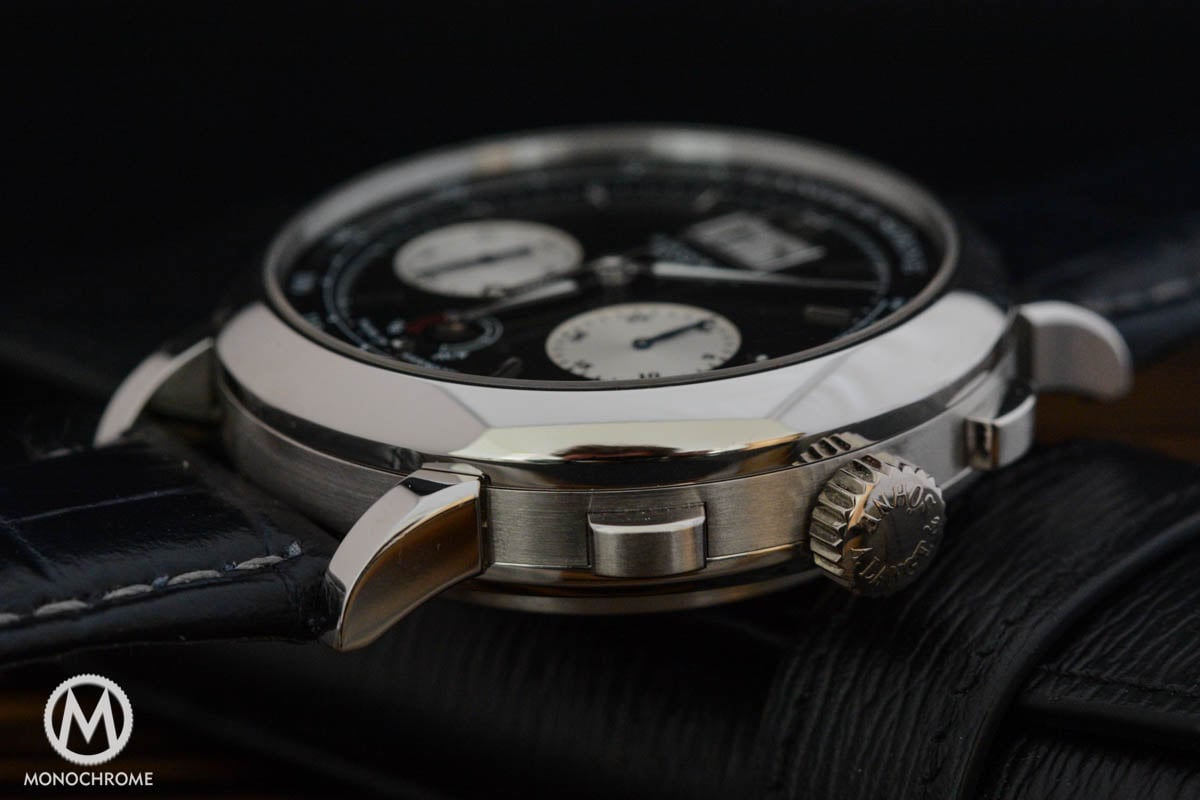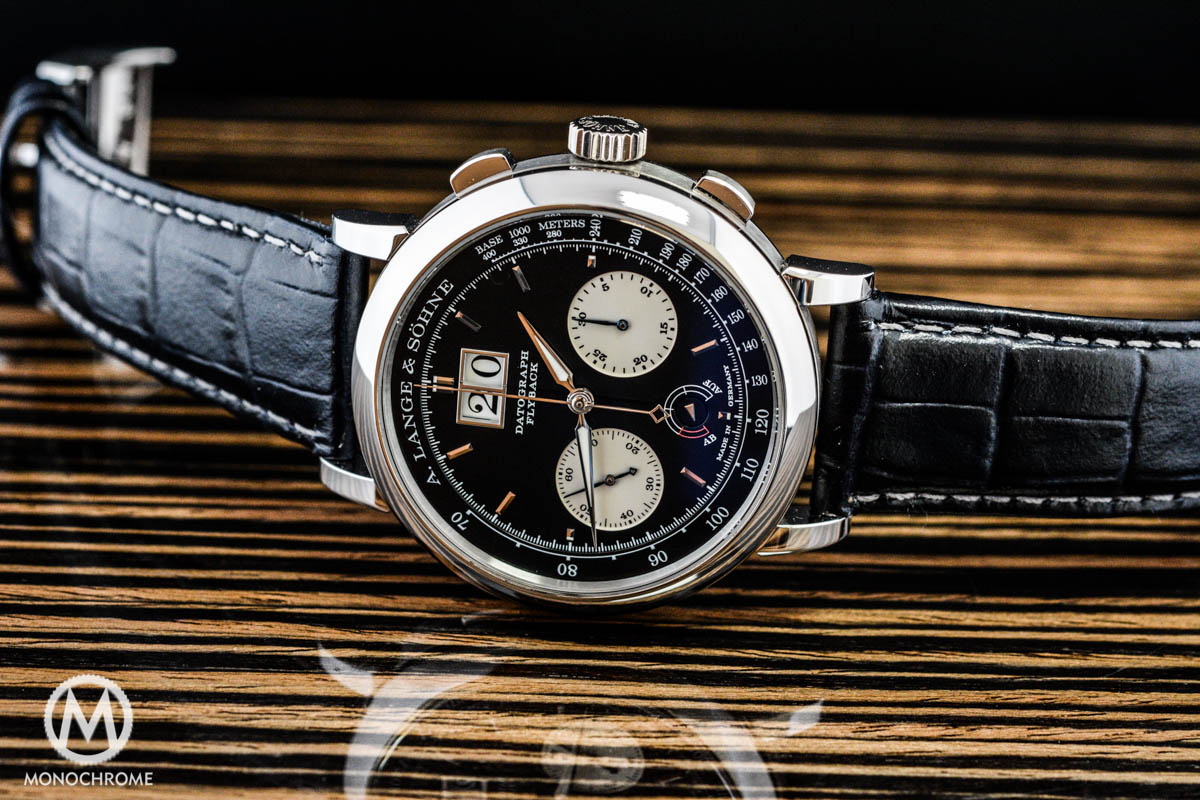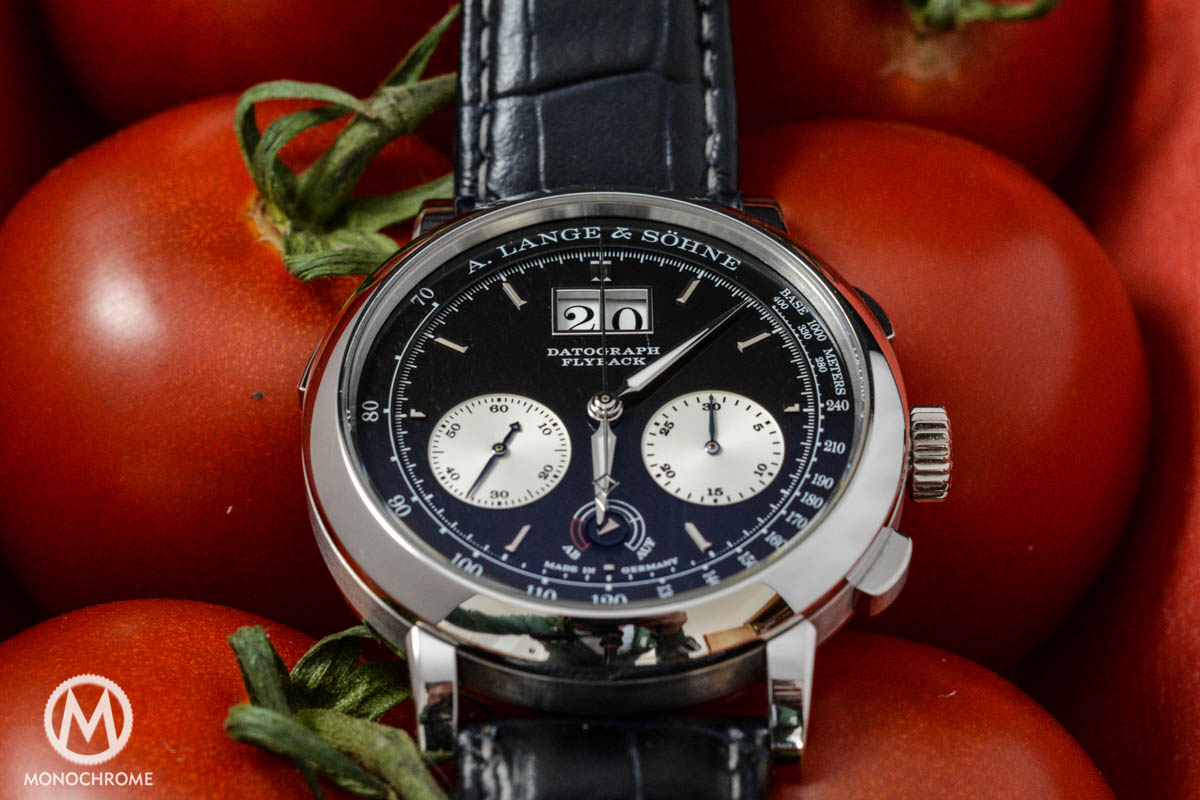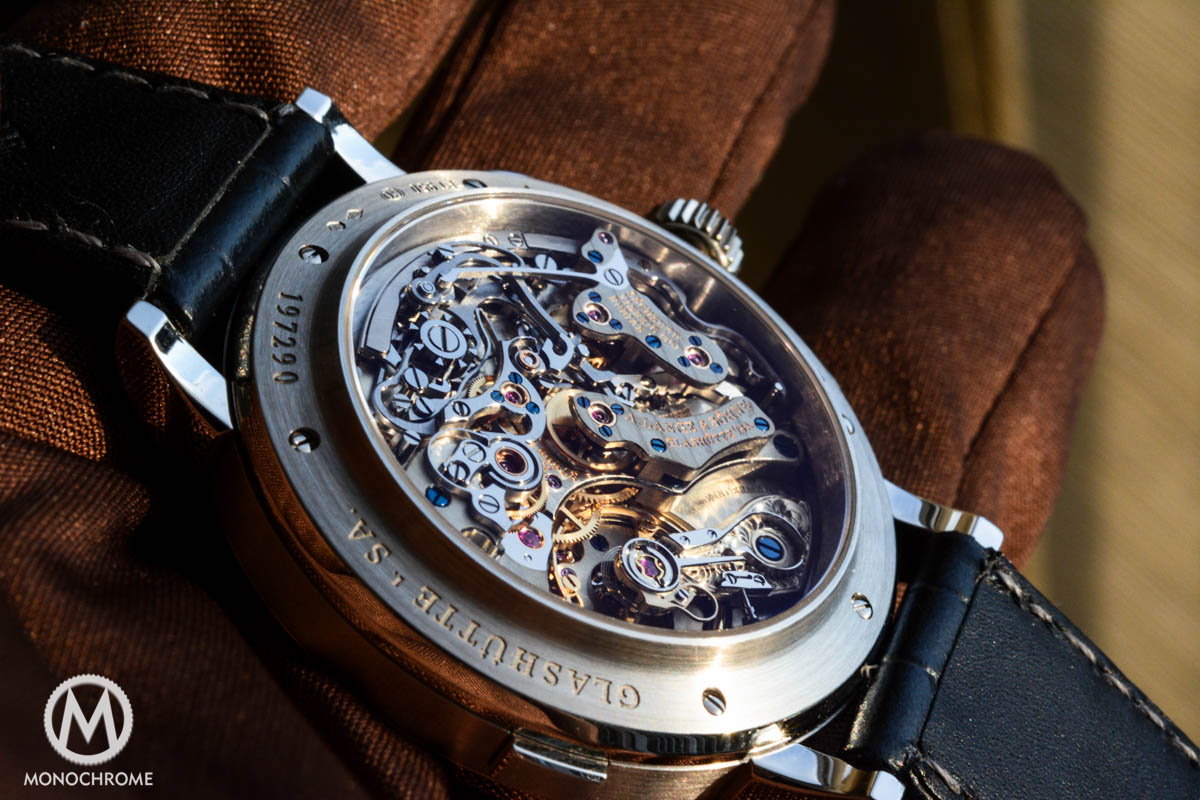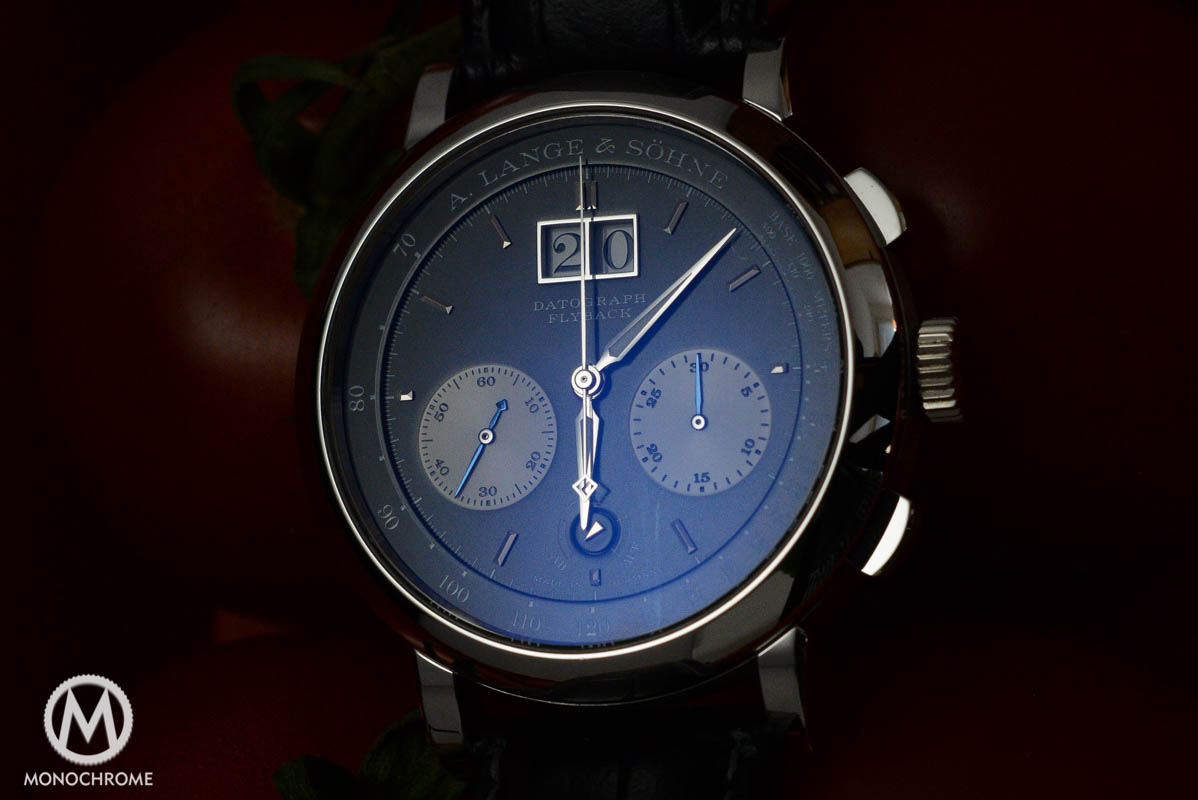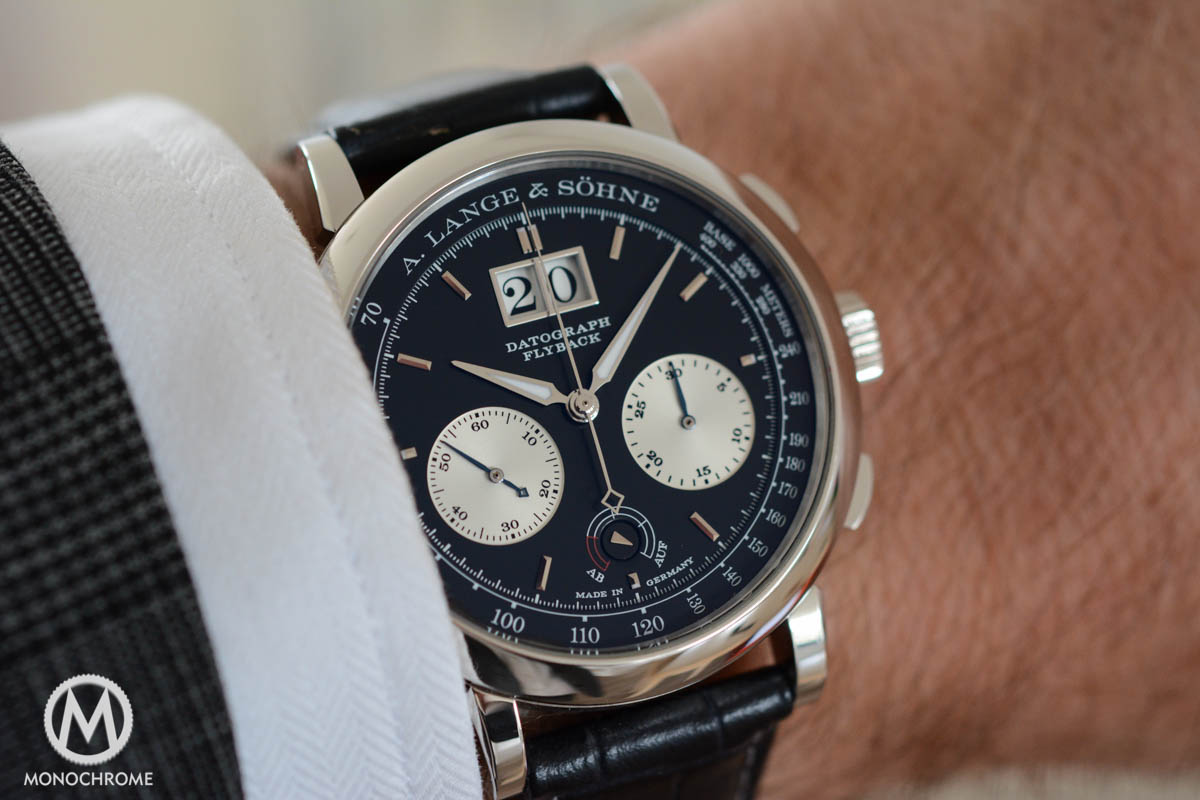A. Lange & Söhne Datograph Up Down – REVIEW with exclusive photos, price and specs

Last year we had the distinct pleasure to review the A. Lange & Söhne Double Split; arguably the most beautiful chronograph movement on the market today. As a follow-up we’re reviewing its little brother, the A. Lange & Söhne Datograph Up Down, that also has a stunning movement and features an added large date. The A. Lange & Söhne Datograph is one of the icons of modern watchmaking. And it has only been on the market since 1999! Let’s find out what contributes to this almost instant success.
This year it has been 15 years since the first generation Datograph was introduced, and two years ago, in 2012, the Dato (as it’s lovingly referred to by collectors) was slightly redesigned. The Roman numerals have made place for baton hour markers, the case has been enlarged from 39mm to 41mm, and it now offers 60 hours of autonomy when fully wound (that’s 24 hours more than on the previous generation.) Although the visual changes might seem almost insignificant, the new generation Datograph definitely has a more modern look.

What remains the same is the magnificent three-dimensional „landscape” of bridges, levers, cams, jewels and a column-wheel. Also the characteristic dial layout, with rather unusual positioning of the sub dials, and the chronograph’s instantaneous jumping minutes and flyback function remain the same. The Dato can still be referred to as a super-chrono, that in terms of movement architecture comes extremely close to its big brother, the Double Split. With the added „outsize” date and the smaller diameter it’s more comfortable on the wrist and better suited for daily wearing, compared to its big brother.
When A. Lange & Söhne introduced the Datograph in 1999, it was actually just 5 years since the company introduced its very first collection in 1994. I think that’s a very impressive achievement for such a young brand, actually it’s nothing short of brilliant. What many people don’t know, is that a chronograph movement is one of the most complex mechanical movements, surpassing the complexity of a tourbillon or a perpetual calendar. Especially when that movement features a flyback and an instantaneous jumping minute counter.

Features
The Datograph’s name already gives a bit of a clue about what one can expect. A chronograph with a date to be precise, although the Datograph comprises so much more than just that. The chronograph features a fly-back function, a precisely-jumping minute counter, a quick-set oversized date and two subdials that are very recognizable because of their positioning on the dial. Between these two subdials is a power reserve that indicates how much of the 60 hours of power remains in the single main spring. More about these features below, but many of these features do set the Datograph apart from the crowd of mechanical chronographs.
One thing that has to be mentioned, is that this Datograph Up/Down has the smoothest chronograph action of pushers that I have ever experienced.
Dial / hands
On the wrist that the remarkable dial layout also immediately catches the attention. For connoisseurs that is, and they will instantly recognize the Datograph. People who’ve never seen the Datograph, or are even unfamiliar with this ultra high-end German brand, will immediately recognize the sheer beauty, elegance and beautifully proportioned wrist watch that sits very nicely on the wrist.

The baton hour markers stand out beautifully against the matte black dial, and so does the tachometer scale, printed in white, that surrounds the dial. The two sub dials, displaying the continuous running seconds and the 30-minute chronograph register, are in a matte silver colour. The hands in both sub dials are in heat blued steel; just one of the many beautiful details.
I find the dial, with everything on it, very nicely balance. This is mainly due to the unusual positioning of the sub dials and because of this the oversize date window gets enough space and does not clutter the dial. The change from three Roman numerals (II, VI and X on the first generation) to baton markers also contributes to this very nice balance on the dial, and the hour markers subtly shine when they reflect light. Everything about the Datograph’s dial shows quality and luxury.
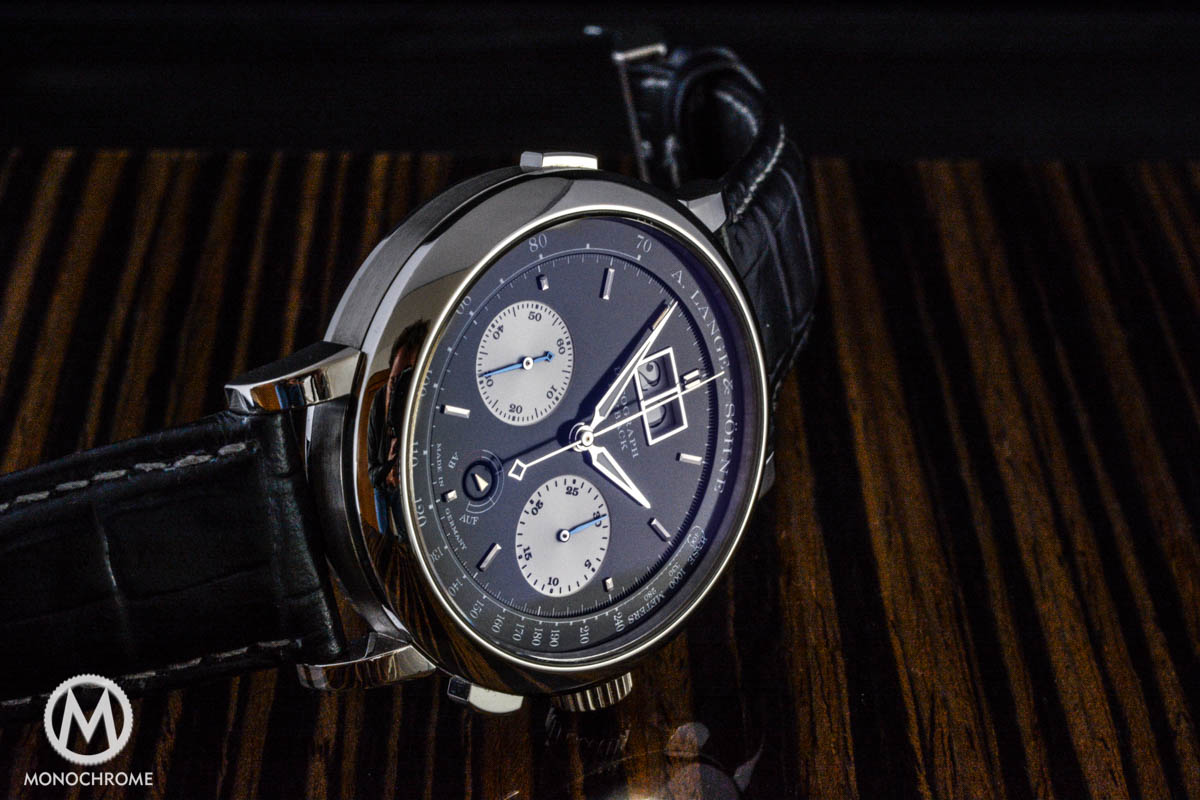
The central chrono seconds hand features a distinct counter weight, similar to that on the aforementioned Double Split, and also on the 1815 Chronograph. The dagger-style hour and minute hand are filled with luminescent material. Do not expect the same strength of Super LumiNova as on dive watches, however you can read the time during the dark of night.
Case / strap
The platinum case of Datograph Up/Down is exactly 41.0 mm in diameter and 13.1 mm in height. On the right side are the signed crown and two pushers for operating the chronograph. The pusher on the left-hand side is for adjusting the outsize date (one push advanced the date by one day.)
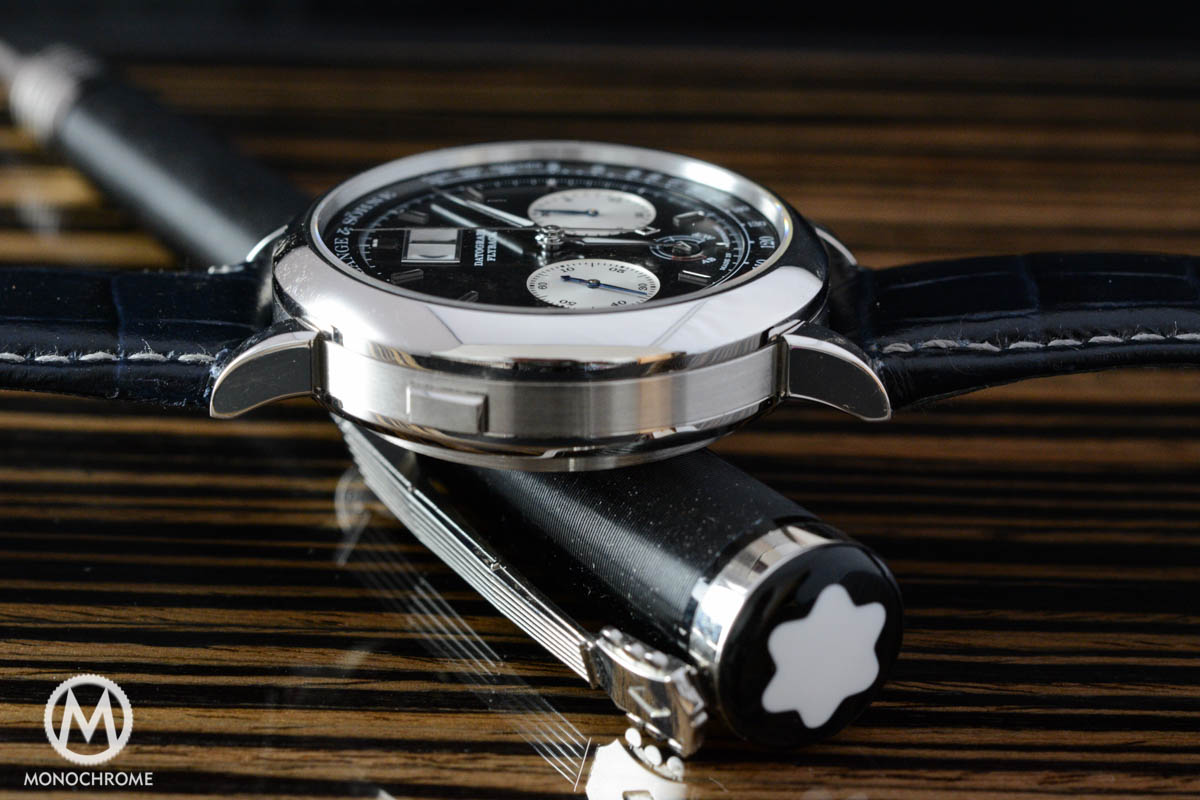
The bezel if polished and the mid case features a straight brushed finish, that is extended to the surface of the pushers. The lugs are screwed to the mid-case, are quite short and slope downwards, which adds to the pleasant balance on the wrist. With a weight of 155 grams the Datograph is not the lightest watch, but that does not reduce the pleasure of wearing by any means.
The case-back, with sapphire crystal, protrudes so there’s enough space for the tremendously beautiful “landscape” of bridges, levers and cams. It looks like this sapphire crystal has also been treated with anti-reflective coating, and when looking at the movement you often get the feeling there’s no crystal at all.
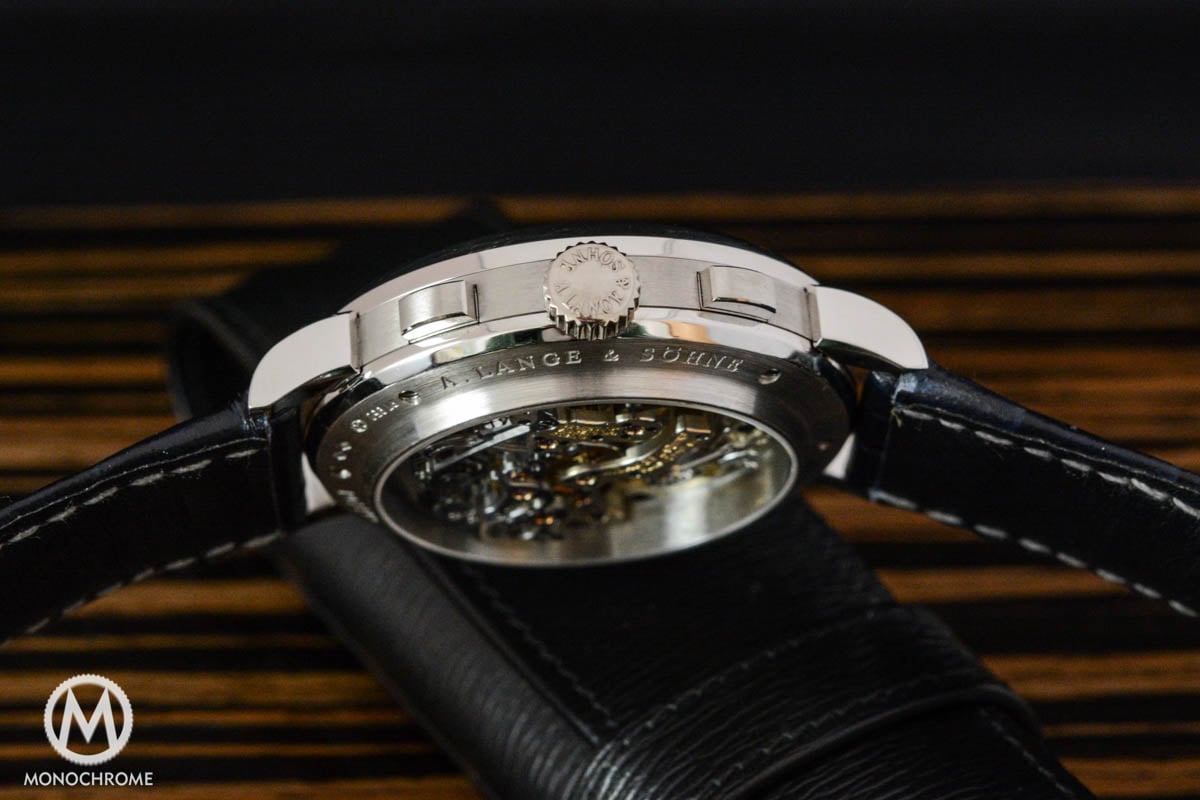
The Datograph Up/Down comes on a black alligator strap, with leather lining, and a grey thread that is stitched by hand.
Movement
The Datograph’s movement is calibre L951.6 that comprises 451 parts in total. All bridges and the main plate are crafted from untreated German silver, which over time, gets a bit of patina that adds a warm yellowish. The entire movement is lavishly finished by hand. Bridges are angled and the angles are polished, the flat surfaces are adorned with Glashütte striping (the German equivalent of côte de Genève striping) and jewels are set in gold chatons that are fixed by three heat blued screws. The steel parts – rockers, levers, cams and the column-wheel – are also finished by hand, and feature a straight-graining on the flat surfaces and angled and polished edges.

Calibre L951.6 offers a power reserve of 60 hours, from one single main spring barrel. Lange’s proprietary balance has six adjustable poising weights, which together with a swan-neck fine adjustment, assures superior rate accuracy. The balance spring is crafted in-house, which is something not many watch brands can say. It vibrates with a frequency of 18,000 vph. The balance cock has engraved by hand and is one of the signature features of every A. Lange & Söhne.
The Datograph offers an outsized date and a fly-back chronograph. The latter means that the chronograph can be reset to zero, and started again – during an ongoing time measurement – simply by pressing one pusher. On a normal chronograph that would require 3 actions: pushing once to stop, once to reset to zero and once more to start a new time measurement again. Besides the fly-back function, the Dato also features a precisely-jumping minute counter – a patented A. Lange & Söhne mechanism. This means that the elapsed time, as measured by the chronograph, is displayed with one-minute increments.

Complexity, finish, and the price
Besides the abundant decoration and finishing of the movement, there’s another factor that determines how much time it costs before such a movement is ready to be deliver to the client. Every movement coming from the manufacture has been assembled, extensively tested, disassembled and assembled again. In this complex movement there are quite a few rockers, levers and cams, and of course a 8 pillar column-wheel. Every of these moving parts has to perfectly touch the other part and everything has to be perfect. The power with which the moving parts touch each other, the height in which they make contact and the length of each part is also extremely important. When all parts are in one plane level, it would not be that complex. Hhowever many parts have one pivoting point, and there’s always a tiny, tiny, bit of play that has to be out-ruled by the watchmaker. The watchmaker working on such a movement has to be a very experienced and skilled watchmaker and getting everything perfect simply takes time. This is artisan watchmaking and has nothing to do with mass-produced mechanical movement that are widely used in the watch industry.
The Datograph comes at a retail price of $ 90,700 USD / € 74.400 Euros. This might sound steep, however all the above should be considered and it can simply not be compared to any off the shelf chronograph. Taking all this into account I think that the Datograph’s price is more than justified.
The verdict
Even with this über-class of mechanical movements there are pros and cons. First of all the wrist presence, the lavishly finished movement and the sheer quality of the Datograph Up/Down is simply magnificent and as such it does not have many equals. Competition can only be found with its siblings from A. Lange & Söhne, with Patek, Vacheron, the Montblanc Villeret collection and De Bethune’s recently introduced chronograph, the DB28 MaxiChrono. Compared to Lange’s Double Split it’s smaller, lighter and more wearable. And it adds a very convenient outsize date!
The size of 41.0 mm feels really good on the wrist, and although the height of 13.1 mm feels just fine, I wouldn’t mind if it had been slightly thinner. That also applies to the weight, although the Datograph is perfectly balanced on the wrist and feels great on the wrist. On the other hand, with such a magnificent timepiece, it’s actually good that it has some weight so you’ll be aware of it.
The Dato’s looks are extremely handsome, very appealing and it’s face is perfectly balanced. The only ‘comment’ we’ve heard from several collectors is that they do not like the “blank field” when the date is between 1 and 9, and they prefer to see a zero. Personally I find this blank field the best solution.
The Datograph Up/Down does look good with casual chic, formal attire and even with jeans and jacket. It’s an almost all-rounder that would only look in the wrong place when worn while wearing black tie, or by the side of the swimming pool. It’s perfectly balanced dial is enthralling and very stylish at the same time. And that’s a very rare quality!



